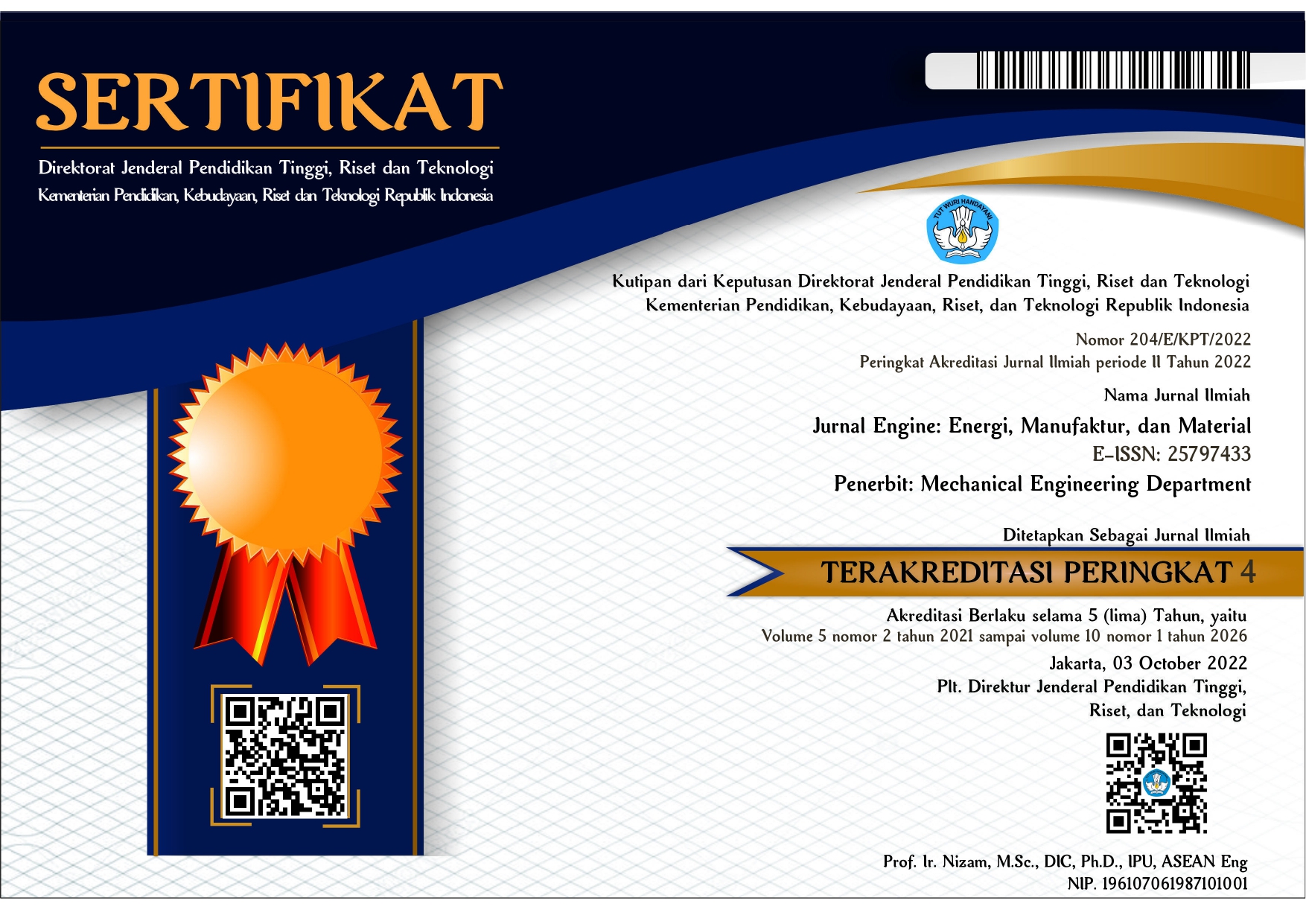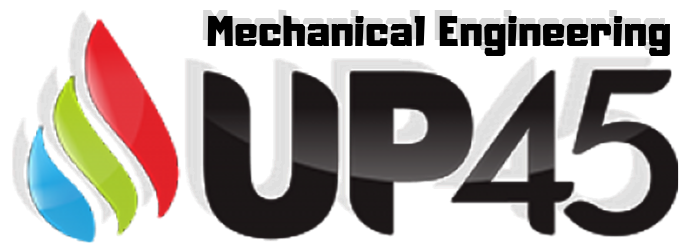Pengaruh Kemiringan dan Jumlah Pisau Pencacah terhadap Kinerja Mesin Pencacah Rumput untuk Kompos
DOI:
https://doi.org/10.30588/jeemm.v3i2.588Keywords:
composting, grass chopper machine, blades, inclinationAbstract
Compost can occur by itself through natural processes, but the process takes a long time. The process of organic materials such as grass into compost can be accelerated by the process of being chopped into small pieces first, then mixed with microorganisms. The process of cutting or chopping grass will be faster if done with a chopper machine. The size of the grass's chops significantly affects the composting process. The smaller of the chops, the composting process will be faster because decomposing bacteria touch the surface area. The research aims to study the effect of the inclination and the number of chopper blades on the grass chopper machine's performance. One component that affects the results of a chopper is a blade. The initial stage of this study is to build a prototype chopper with blades made from high-speed steel (HSS). The process of data collection is based on the different blade inclinations, i.e., 0o, 5o, and 10o to the horizontal axis, and the different number of blades, i.e., 2, 3, and 4 with 3,339 rpm motor rotation. The chopping capacity of the machine is measured based on the weight and length of the chops. The results of testing with the same blade inclination and the different number of blades show that with four blades, the weight of the chops is greater, and the percentage of chops with lengths > 1.5 cm is lower. This happens because the frequency of cutting is greater. While the same number of blades, but with different inclination, the weight and percentage of chops with lengths > 1.5 cm tend to be similar due to changes in the cutting platform.References
Andasuryani, Santoso, & Chandra, A. R. (2009). Membangun Mesin Pencacah Rumput Gajah Untuk Peningkatan Efektivitas Konsumsi Pakan Ternak Sapi. Padang: Universitas Andalas.
Andrianto, M., & Fahriansyah, F. (2019). Mesin Pencacah Limbah Kulit Kakao. Jurnal Engine: Energi, Manufaktur, dan Material, 3(1), 1-7. doi:http://dx.doi.org/10.30588/jeemm.v3i1.480
Ghatge, D. A., Birje, C., & Yadav, P. S. (2017). Use of Shearing Operation for MS Bar Cutting by Pneumatic Bar Cutting Machine. International Advanced Research Journal in Science, Engineering, and Technology (IARJSET), 4(1), 133-139.
Lumbanraja, P. (2014). Prinsip Dasar Pengomposan. Medan: Universitas Sumatera Utara.
Ma'arif, S. (2011). Rancang Bangun Alat Penggiling Tebu untuk Meningkatkan Volume Air Nira pada Industri Kecil Gula Merah. Yogyakarta: Magister Sistem Teknik, Universitas Gadjah Mada.
Niemann, G. (1986). Elemen Mesin. Jakarta: Erlangga.
Pamula, A., Asmar, Mursalim, & Pandi. (2018). Optimalisasi Sistem Pencacahan Mesin Pencacah Jerami. Sorowako: Akademi Teknik Soroako.
Priono, H., Ilyas, M. Y., Nugroho, A. R., Setyawan, D., Maulidiyah, L., & Anugrah, R. A. (2019). Desain Pencacah Serabut Kelapa dengan Penggerak Motor Listrik. Jurnal Engine: Energi, Manufaktur, dan Material, 3(1), 23-28. doi:http://dx.doi.org/10.30588/jeemm.v3i1.494
Roidah, I. S. (2013). Manfaat Penggunaan Pupuk Organik untuk Kesuburan Tanah. Jurnal Universitas Tulungagung BONOROWO, 1(1), 30-42.
Shigley, J. E., & Mischke, C. R. (1996). Standard Handbook of Machne Design. New York: McGraw-Hill. doi:10.5860/choice.34-5116
Sugiyanto, S., & Trisnowati, J. (2018). Rancang Bangun Mesin Perajang Kerupuk Jengkol untuk Meningkatkan Pendapatan UKM. Jurnal Engine: Energi, Manufaktur, dan Material, 2(2), 25-30. doi:http://dx.doi.org/10.30588/jeemm.v2i2.421
Sularso, & Suga, K. (2004). Dasar Perancangan dan Pemilihan Elemen Mesin. Jakarta: PT. Pradnya Paramita.
Widiyaningrum, P., & Lisdiana, L. (2015). Efektivitas Proses Pengomposan Sampah Daun dengan Tiga Sumber Aktivator Berbeda. Rekayasa, 13(2), 107-113. doi:10.15294/rekayasa.v13i2.5604
Downloads
Published
How to Cite
Issue
Section
License
Authors who publish with Jurnal Engine: Energi, Manufaktur, dan Material agree to the following terms:
Authors retain copyright and grant the Jurnal Engine: Energi, Manufaktur, dan Material right of first publication with the work simultaneously licensed under a Creative Commons Attribution 4.0 International License that allows others to share (copy and redistribute the material in any medium or format) and adapt (remix, transform, and build upon the material) the work for any purpose, even commercially with an acknowledgment of the work's authorship and initial publication in Jurnal Engine: Energi, Manufaktur, dan Material. Authors are able to enter into separate, additional contractual arrangements for the non-exclusive distribution of the journal's published version of the work (e.g., post it to an institutional repository or publish it in a book), with an acknowledgment of its initial publication in Jurnal Engine: Energi, Manufaktur, dan Material. Authors are permitted and encouraged to post their work online (e.g., in institutional repositories or on their website) prior to and during the submission process, as it can lead to productive exchanges, as well as earlier and greater citation of published work (See The Effect of Open Access).


















